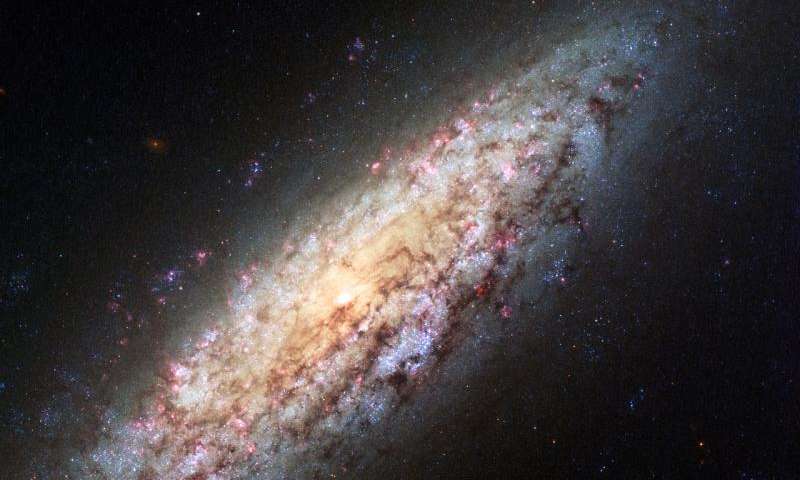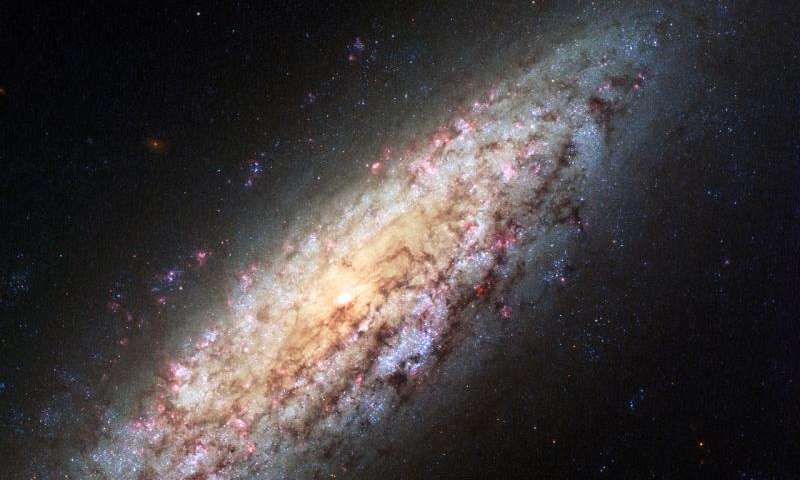

We often feature spacious galaxies surrounded by many neighbors (comprising galaxy groups and galaxy clusters). Normally, if the neighbor can’t be seen in the frame, it isn’t too far out of eyeshot. This pretty galaxy is an exception to the rule—a true island universe. Called NGC 6503, it can be found approximately 18 million light-years from Earth toward the Draco constellation. Given this comparably short distance, it is one of the closest galaxies outside of the Local Group, which includes the Milky Way and Andromeda Galaxies.
NGC 6503 is unlike the majority of other galaxies in the sense that it is completely alone, with no companion in sight. This stems from the fact that it’s located on the edge of an empty expanse of spacetime—a region that extends around 150 million light-years across, and is completely devoid of the materials (like gas and dust) that normally permeate intergalactic space—called the local void. More from NASA:
It has an almost non-existent central bulge surrounded by a massive halo of gas. The galaxy’s central region is a good example of something known as a “low ionisation nuclear emission region“, or LINER. These are less luminous than some of the brightest galaxies. Emission from NGC 6503’s heart is believed to be the result of a starved black hole that is only just being kept active, receiving a very small amount of infalling gas to keep its large appetite at bay.
A previous image of NGC 6503 was released as a Hubble Picture of the Week back in 2010, taken by Hubble’s Advanced Camera for Surveys. However, this new image, taken using Hubble’s Wide Field Camera 3 (WFC3), shows NGC 6503 in striking detail and with a richer set of colours. Bright red patches of gas can be seen scattered through its swirling spiral arms, mixed with bright blue regions that contain newly-forming stars. Dark brown dust lanes snake across the galaxy’s bright arms and centre, giving it a mottled appearance.
Installed in 2009 during the final Hubble servicing mission, SM4, WFC3 covers a wide range of the spectrum, from the ultraviolet all the way through to the near-infrared. Compared with its predecessor, the Wide Field and Planetary Camera 2 (WFPC2), it offers improved resolution and a wider field of view, and has led to a large number of stunning Hubble images since its installation.
[Reference: NASA/ESA]